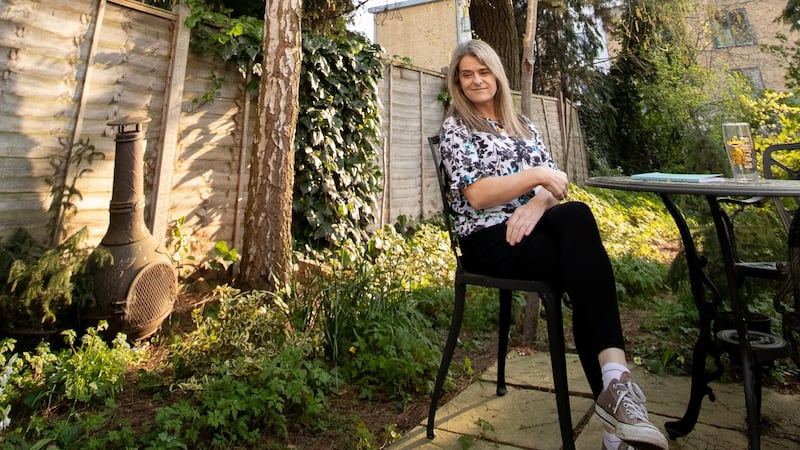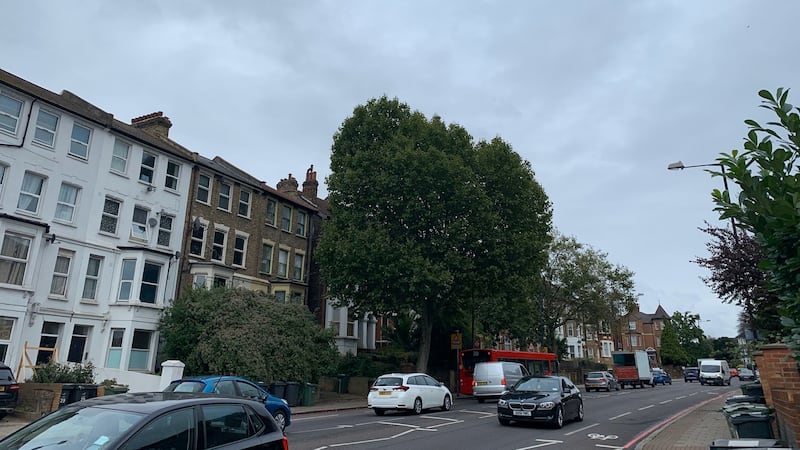I love the start of summer and the smell of the hawthorn blossom, the sweet scent of warm days, comfortingly familiar in these unfamiliar times. The hawthorn has a magic about it.
Lone hawthorn bushes were traditionally believed to be the meeting place of fairies, and so God help you if you cut one down. Hawthorns, it’s said, symbolise light and protection, and bring good luck and prosperity – at a time we’ve never needed them more.
All trees have “magical” properties, only theirs is the magic of science. Trees protect us and help us live. They give us half of all our oxygen, clean our air and regulate our climate. They give us food and shelter, and stop the ground that we walk on from washing away.
Not only that. Humans have a special bond with trees. Research shows that when we are around trees we're happier, less stressed and less anxious. Our cortisol levels drop, our blood pressure lowers. Trees are great. Just ask Isaac Newton or Buddha.
I've enjoyed my own quiet love affair with trees since I was a small child, growing up in the west of Ireland. Growing up, in fact, alongside a couple of tiny fir trees my father planted when I was four years old.
I remembered the firs my father had planted. Even though they are long gone now – as is my father
“When they are big, you’ll be big,” he told me, and my bond with those trees was instantly formed. (It lasted until I was a teenager and he dug them up to build a shed. Not a man for romance, my father.)
When I left home to go to college and moved away from the countryside, my bond with trees was broken for a while. Then one day many years later, attending a healing therapy workshop after I’d been diagnosed with a chronic illness, I found myself hugging a tree.
I didn’t particularly want to. In fact I felt completely ridiculous there in that field with a few other middle-aged women as we went around “communicating” with trees. The idea was that the trees would ground us and reconnect us with nature – after all, what could be more grounding than a tree? But I kept an eye out uneasily for anyone watching us. Could we be reported for suspicious behaviour?
Relaxed
Once I realised that nobody was about to jump on a phone and dial 999, I relaxed into it. Gradually it started to feel good. Like I was recognising nature again after a while of being away. I’d left Ireland by then to move to the UK. Now I felt I was coming back to a mindset I’d very much missed.
I thought about the tree-lined road to my granny’s house in Co Sligo, creating a light-filled green tunnel on sunny summer days. The big spruces out the back of her bedroom, with the wind howling through them in winter.

And I remembered the firs my father had planted. Even though they are long gone now – as is my father. (The shed, however, is still with us).
Trees have their own communities and families, according to German forester Peter Wohlleben. They form tribes to help each other out. In his bestselling book, The Hidden Life of Trees, he explains how trees "talk" to each other and share their resources. He claims that trees have friends, feel loneliness and pain, and communicate underground via the "woodwide web".
But there are good guys and bad guys in the tree community, and some tribes work better than others. Beeches and oaks form forest communities that last for thousands of years because they act like families. Willows, however, are loners. Poplars aren’t social either, and a birch will fight other trees for more space. City trees are like street kids, lonely and struggling and lacking deep roots, Wohlleben claims.
I'm not so sure about that. One of the nicest trees I ever knew was a city tree, growing on a footpath on the South Circular Road in southeast London. Its highest branches reached the windows of my flat on the top floor of a four-storey Victorian house.
Big sash windows let lots of light into the rooms, but the building was fairly decrepit. The windows let in plenty of noise as well. Cars and buses and lorries and trains (the flat was also right beside a railway bridge) roared past every minute of the day and night, and as soon as I moved into that flat I realised I hated it. It was my first time living on my own, and I sat on the floor (the flat was unfurnished and I didn’t have any furniture) and cried.
Full bloom
The tree saved me. It was the start of summer and it was in full bloom. It rustled its leaves outside the window, and I realised that – from my position on the floor – all I could see was green. It was like being in a forest despite the noise outside.
And then a couple of squirrels started a game of chase around the tree, leaping from branch to branch, up and down, over and back, and obviously having such fun that it stopped my tears as I watched them. I thought then that maybe I could stay there. Well, that and the fact I had signed a 12-month lease with no break clause.
The tree was a lush shelter in summer, a rustling blanket of green outside the window. It was an explosion of colour in autumn, a sculpture of bare branches in winter. And then all the fun would start again in spring as the new buds appeared.
We've committed to planting 8,000 more hectares of trees each year, but only 2 per cent of the country is covered by natural native woodlands
I lived there for six years, some of my happiest years in London, moving out on another May day. The tree was in its full glory outside as I closed the door behind me for the last time. I wanted to give the tree a hug goodbye, and was hoping the footpath outside would be quiet. So I cursed inwardly to see somebody standing beside my tree. He was holding a clipboard and smiled at me as I approached.
“Do you know who owns this building?” he said.
I told him it was managed by local estate agents and asked him why he wanted to know.
“I’m looking after this tree,” he said. “We want to make sure it is protected, so I need to talk to the owners.”
What were the odds? Okay, so he was blocking me from hugging the tree, but he was promising to protect it after I was gone. I couldn’t believe it. I was so delighted I felt like hugging him instead.
Climate change
Whatever your feelings about hugging trees, we have to do more to protect them. Half the trees on the planet have disappeared since we started farming, and at the rate we’re cutting them down there’ll be none left in about 200 years’ time.
Trees are one of the cheapest and easiest ways of tackling climate change by taking harmful CO2 gases out of the atmosphere. If we planted more trees we could potentially remove two-thirds of our global emissions, say the scientists.

And Ireland is in particular need of help here. Our emissions are the third highest per capita in the EU, and we’re one of the EU states expected to miss its 2020 targets this year.
While the Irish forestry sector supports 12,000 rural-based jobs and contributes around €2.3 billion to the annual economy, Ireland has one of the lowest forest coverage levels in Europe.
Sure, we’ve committed to planting 8,000 more hectares of trees each year, but only 2 per cent of the country is covered by natural native woodlands. The commercial plantations we’re planning won’t give us the biodiversity we need to protect the species that are rapidly disappearing.
However, there are some positive plans afoot. Coillte has just announced plans to end all commercial operations in its Dublin forests, and will be gradually replacing the planting of Sitka Spruce with native species, to create more biodiverse climate-resilient woodland.
A drive to restore the ancient oak forest of the Lough Grainey valley is currently under way in east Clare, with the aim of planting trees, protecting native species, re-wilding and providing nature education for children. The Lough Grainey Nature Sanctuary project is fundraising to buy the land it needs for the forest, and hopes it may inspire other similar projects across the country. You can find more information online at Loughgrainey.org
We also have National Tree Week in March and Tetra Pak’s Tree Day in October, when 1,000 saplings are given out to primary schools around the country. (Hopefully they’ll last longer than my baby firs.) You can plant a tree to commemorate a loved one or special occasion through the Irish Tree Council’s Gift a Tree & Grow a Forest initiative, full details on their website.
Signed up
Internationally, the World Economic Forum has launched a plan to grow, restore and conserve one trillion trees around the world. Even Donald Trump has signed up to it.
There’s also Africa’s Great Green Wall project, planting 8,000km of trees across the entire width of the country, which will make it the largest living structure on the planet.
2020 is International Year of Plant Health, and it’s good to remember that trees are among our friendliest plants. Today I’m lucky enough to get to hang out with several of them in the back garden of my flat. It’s the first place I owned, and to be honest I was probably more excited about the trees than the house when I saw it.
The most beautiful tree in the garden is a silver birch close to the house. At the moment it’s a gorgeous riot of summer green, all dappled light on sunny days.
And so I’ve finally found a tree to grow old with.










